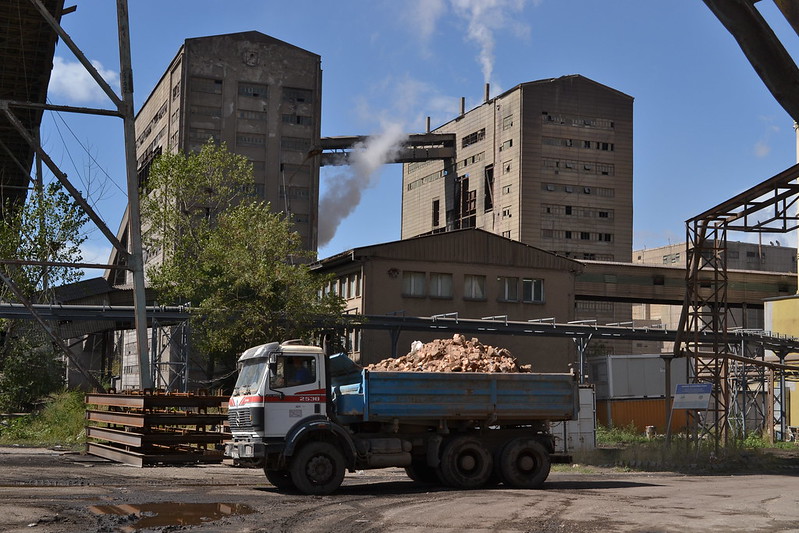The Future of Renewable Energy in Kosovo
 In 2024, Kosovo is at a crossroads. Its antique coal power plants cannot meet demand and need refurbishment. Many people see this as the perfect opportunity to expand the use of renewable energy in Kosovo. However, any renewable future in Kosovo has to contend with the state’s large coal reserves.
In 2024, Kosovo is at a crossroads. Its antique coal power plants cannot meet demand and need refurbishment. Many people see this as the perfect opportunity to expand the use of renewable energy in Kosovo. However, any renewable future in Kosovo has to contend with the state’s large coal reserves.
The Current Energy Situation
Europe’s newest country is ranked 166th by size. But, within its 4,203 square miles, there are 12.44 Megatons of lignite coal. Kosovo has the world’s fifth-largest proven reserve of this type of coal. Kosovars have been dependent on this lignite coal since Yugoslav times. Even today, two lignite coal power plants – Kosova A and Kosova B – produce over 90% of Kosovo’s electricity. This current setup is facing problems in 2024.
Ageing Infrastructure and Energy Importation
Yugoslavia built Kosova A in 1962 and B in 1983, respectively. Today, the plants are inefficient and in need of modernization. There are frequent blackouts at the two plants as they struggle with demand.
The power grid is also in bad condition. Some rural villages report that they do not receive electricity for six months of the year. Two-thirds of people in poverty in Kosovo live in the countryside. Economic growth is nearly impossible without a reliable energy supply. Kosovo’s current energy problems are trapping people in the cycle of poverty.
Kosovo has had to import energy as the power plants cannot provide the required levels in their current state. In 2022, Kosovo spent 12.5% of its GDP on importing energy, according to the International Monetary Fund (IMF) paper. This is a high percentage for a growing economy like Kosovo. It harms their ability to provide basic services for their citizens. For example, Kosovo only spends 3.5% of its GDP on health care while the EU average is 19.5%. Energy importation is a large burden on the Kosovo economy.
Furthermore, expensive energy importation is having a subsequent effect on citizens as well. Many reports estimate that 40% of Kosovars live in energy poverty, according to a 2022 article by Ana Krstinovska. Energy importation drives the price of energy up in Kosovo and leads to locals not being able to afford basic energy necessities.
Poor Air Quality
Kosovo has some of the most polluted air in Europe. Kosovo’s carbon intensity – CO2 emissions released per unit of electricity- is four times the rest of Europe, according to the IMF paper. The consensus is that Kosova A and B are the sources of this poor air quality. Their inefficiency and high usage make them two of Europe’s most polluting power plants, according to Intellinews.
Next to these coal power plants is the town of Obiliq. The citizens here suffer due to bad air quality. In 2020, environmental NGO Bankwatch studied dust concentration in Obiliq. The level of harmful toxins in the air surpassed the EU-required limit in 17 of the 26 days of the study.
Bankwatch specifically measured dangerous particulate matter (PM2.5) in the air. Long-term exposure to PM2.5 can lead to respiratory, pulmonary and heart diseases. In 2019, long-term PM2.5 exposure caused 4.14 million deaths worldwide.
In 2024, Kosovo has made some steps towards a more sustainable energy grid already. Two years ago, Kosovo opened its biggest wind farm. The Selac Wind Farm has 27 turbines and provides electricity for around 10% of Kosovars.
The project employed mostly workers from the local communities around the wind farm site. Contractors were contractually obliged to limit the amount of foreign workers during the project and the project brought much-needed jobs to this region.
The Future of Energy in Kosovo
The Kosovo leadership has provided mixed messages on its commitment to a renewable future. The current government wants to modernize Kosova B and two units of Kosova A. A refurbishment would make the plants less polluting and increase energy production. This plan would allow Kosovo to be less reliant on importing energy. Bankwatch says the plans “would be an improvement, though less optimal than investment into renewable,” Intellinews reports.
The refusal to phase out coal is a controversial decision. In 2023, an environmental watchdog called it a “critical gap in Kosovo’s commitment to decarbonization,” according to Reuters. Kosova A and B are likely to remain in use beyond 2040.
The strategy, whilst controversial for what it does not include, does provide proof of plans for a more renewable future. The Kosovo government set out these targets for 2031:
- Reduce greenhouse gas emissions in the energy sector by 32%
- Increase the share of renewable energy sources up to 35%
- Develop new solar, wind and biomass energy infrastructure.
The World Bank describes this strategy as “laying the foundations for greener growth in Kosovo,” Intellinews reports. Renewable energy in Kosovo could provide a safer and healthier environment. A renewable future in Kosovo could have a lower level of PM2.5 in the air than any future with fossil fuels.
The refurbishment of Kosova A and B means they could become less polluting and produce more energy. This could mean better air quality and less energy imports. However, it could keep coal part of Kosovo’s energy production for the foreseeable future. The emergence of renewable energy in Kosovo is exciting but could continue to be alongside coal instead of replacing it.
– Richard Sartor
Photo: Flickr
